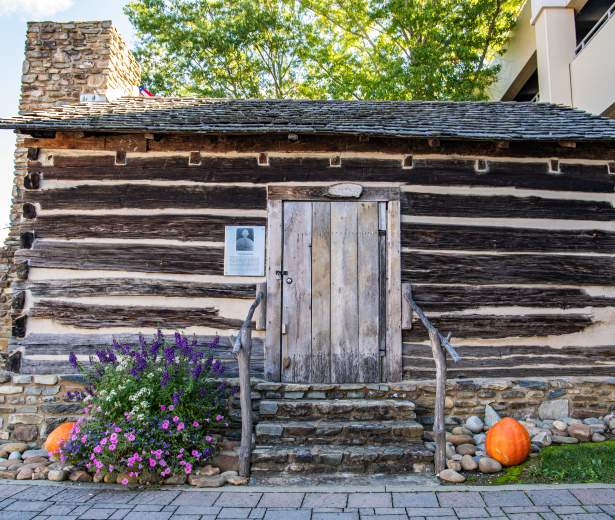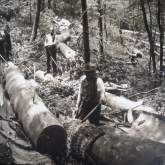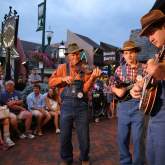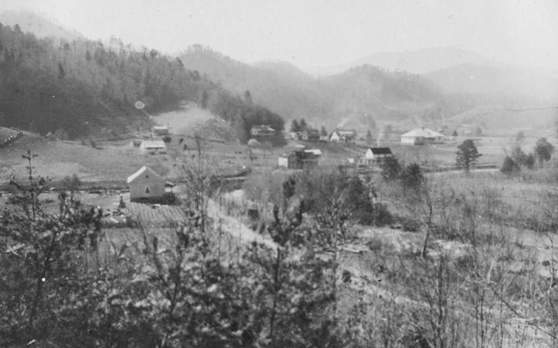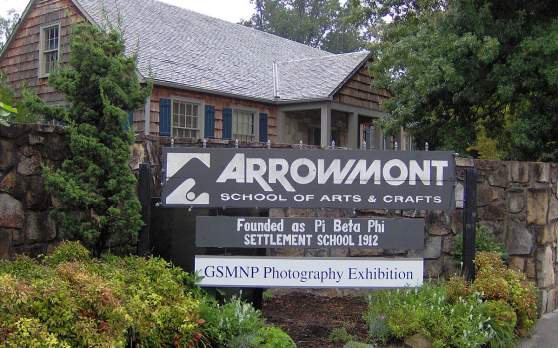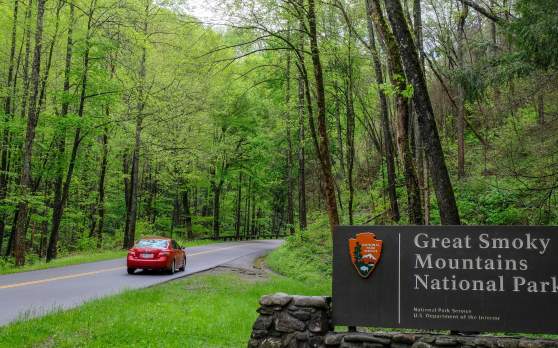Gatlinburg History & Culture
There’s no better place to experience Appalachian culture and history than Gatlinburg and the Great Smoky Mountains and it all begins with a strong-willed lady named Martha. Martha Jane Huskey Ogle, her children and several other family members arrived in a remote locale of the Great Smoky Mountains in East Tennessee called White Oak Flats in 1807. It was their wish to honor her recently deceased husband William and settle in the “land of paradise” he had found for them. That paradise being Gatlinburg. The Ogle cabin was built in that year, and you can still visit it today located downtown near traffic light #3.
The Tennessee Heritage Trail: Three Pathways
Gatlinburg’s historic sites, trails, music, crafts and the arts all paint a picture of a colorful state. To showcase that history, the Tennessee Heritage Trail was developed to highlight the cultural heritage of our people. Numerous Gatlinburg locations have been designated as integral stops. The Heritage Trail, it’s been divided into three distinct pathways.
Arts & Crafts Trail
Features the Arrowmont School of Arts and Crafts and the Great Smoky Arts & Crafts Community. Find unique folk art, candles, hand-made pottery, oak and willow baskets, watercolors, sculptures, paintings and more.
Gatlinburg History Trail
The Gatlinburg History Trail takes you on a journey to discover the people and events that made Tennessee what it is today.
The Music Trail
The Music Trail will have you tapping your toes to diverse styles of music evolving from three Appalachian culture traditions. East Tennessee’s Appalachian region is known for its folk songs and bluegrass, which evolved from the immigrant influences of the 1700s.

1802 Ogle's Cabin: The Original Settlement
Around 1802, William Ogle selected a site for what was to be the first “home” to be built in Gatlinburg. After cutting the logs for the cabin, he returned to South Carolina to get the family. He told them that he had found “The Land of Paradise” in the mountains of East Tennessee. While preparing to bring his family here, he fell ill, probably with malaria, and died in 1803. Four years later, widow Martha Jane Huskey Ogle, at age 46 or 47, came to her late-husband’s “Paradise” with her five sons and two daughters, her brother, Peter Huskey, and his family. They found William’s hewed logs, completed the cabin, and started a new life. Great grandson Andrew Ogle and his family were the last of the clan to live in the cabin, abandoning it around 1910. The Ogle family farm was sold to Pi Beta Phi when the settlement school expanded in 1921, and the cabin was used as a hospital. From 1922 to 1926, it housed a museum of mountain artifacts. Later, the cabin was moved a short distance away from its original site to the former site of the community’s first church building, where you can visit it today.
1837 The First Baptist Church
Religion was important to the settlers and is a large part of the story of the settlement of the Great Smoky Mountains. Before church buildings, settlers held services outside or in their homes. Although this area was originally settled by Presbyterians, the first church was Baptist. The White Oak Flats “arm” of the Sevierville Baptist Church convened in the early 1800s on Baskins Creek, probably at the present location of the Ogle cabin. Under the guidance of the Reverend Richard Evans, a second church was built on River Road near the mouth of Mill Creek (now LeConte). In 1837, they formed a new church and called it White Oak Flats Baptist. The congregation met in a log cabin on Baskins Creek, which also served as a school. The first frame church building was constructed in 1875 at the corner of the Parkway and Baskins Creek Road. The congregation changed its name to Gatlinburg Baptist Church in 1932. In 1951, they constructed a landmark stone church at the same location. As businesses crowded around, First Baptist moved to its present location on Highway 321, east of downtown, in 1991.
1850 The Ogle Store
Noah Ogle was Gatlinburg’s first merchant of record, establishing a store in 1850 on the site that later became the Riverside Hotel. In 1910, he moved the store to the intersection of River Road and the Elkmont Highway. Ephraim E. Ogle took over his father’s store around 1916. Until 1925, the E. E. Ogle and Company store housed the Gatlinburg Post Office. Grandson Charlie A. Ogle and great grandson Charles Earl Ogle continued the family tradition. Through the years the store expanded, spreading out in all directions. You could purchase almost anything from hairpins to threshing machines, “if they could find it.” The quaint old general store and adjacent tourist cabins were torn down in the mid 1970s to make way for the Mountain Mall. The Ogles, descended from the area’s first settlers, have played a major role in Gatlinburg history and the city’s ongoing development.
1854 Gatlinburg's Name: Controversy, Mystery and One Rad Dude
Nestled in the valley of the Little Pigeon River’s West Prong and surrounded on three sides by the majestic Great Smoky Mountains, Gatlinburg has evolved from a rural hamlet to a thriving gateway community. Settled in the early 1800s, it was first named White Oak Flats for the abundant native white oak trees covering the landscape. Also known as a “Land of Paradise,” the area was soon settled by families with familiar names like McCarter, Reagan, Whaley, and Trentham, taking up residence along local streams and hollows. There are many stories as to how Gatlinburg got its name, all involving a controversial figure who settled here in 1854. Radford C. Gatlin opened the town’s second general store, and when the town’s new post office was established there in 1856, the town’s name was changed from White Oak Flats to Gatlinburg. By all accounts, Mr. Gatlin was a flamboyant preacher, establishing his own “Gatlinite” Baptist Church. He was a Democrat in a Republican community, and for reasons which remain unclear, he was eventually banished from the area. Still, Gatlin had the last laugh: the city still bears his name.
1910 The E.L. Reagan Furniture Company
Elijah Lawson Reagan is an important figure in Gatlinburg history. He established a woodworking business in 1910. For more than a decade, he practiced his craft with simple hand tools. In the 1920s, he harnessed the power of the Roaring Fork to operate newfangled power tools, built a water-wheel and installed a turbine and generator to power them. He also furnished electricity to his neighbors until the Tennessee Valley Authority brought inexpensive power to the valley. After his death in 1968, his son, Harlan Reagan, and son-in-law, J. Wade King, took over the business.
1910 The Pi Beta Phi Found The First Schools
In the early 1900s, Gatlinburg was still a remote mountain village located in an even more remote Appalachian region. There were no public schools. In 1910, the alumni of the Pi Beta Phi Fraternity voted to commemorate its 50th anniversary and honor the founders by providing education where no formal schooling had been available. Although it was called a fraternity, Pi Beta Phi was actually a national women’s organization, the first of its kind in America, with a long-standing tradition of helping the underprivileged. The provision for basic education was later expanded to include vocational and home economics training for the community’s adults. The community persuaded E. E. Ogle to sell 35 acres of land to Pi Beta Phi for the establishment of this school. Many area residents were educated here, and the school’s focus on reestablishing and promoting local craft skills helped establish Gatlinburg as a prominent arts and crafts center. Many of its original buildings have been refurbished and are still used today. The school opened in an unused church building in March 1912 with an initial enrollment of 13 students. In 1921, the school expanded by acquiring an additional 35 acres. Today it is known as the Arrowmont School of Arts and Crafts.
1912 The First 100 Years
Gatlinburg changed little in its first hundred years. When the Civil War erupted, some locals joined the Union; others joined the Confederacy. In general, the mountain people tried to remain neutral. Only one Civil War skirmish was fought in Gatlinburg, but many raids were made by both sides to gather resources needed to keep up their war efforts. As with much of the South, deprivation and hardship persisted long after the war. In the early 1800s, education came to the area in the form of subscription schools, where parents paid for each child’s education. The first public school was not founded until 1912, when a public settlement school was created by the Pi Beta Phi Fraternity. The school not only provided academic and practical education, it also contributed to a rebirth of Appalachian culture through arts and crafts and the “cottage craft industry” movement.
1945 Arrowmont School of Arts and Crafts
In 1945, Pi Beta Phi and the University of Tennessee established a summer program of craft workshops for emerging Tennessee artists. It eventually became the Arrowmont School of Arts and Crafts, on the old Pi Beta Phi Settlement School grounds. The program has grown considerably. It now offers year-round classes and workshops for college credit. Once used for elementary and high school education and vocational training, the classrooms have been transformed into studio space for arts and crafts classes, food and lodging services, and facilities for administration and maintenance. The Arrowmont School of Arts and Crafts is a nationally renowned center of contemporary arts and crafts education. Workshops are offered for one and two weeks in the spring and summer, as well as during single-week and weekend workshops in the fall. Areas of study include ceramics, fibers, metals/jewelry, painting, drawing, photography, warm glass, woodturning, woodworking, sculpture, and book and paper arts. Visitors are welcomed year-round to the school’s five galleries, resource center, and book and supply store. Artist residencies, assistantships, work-study, scholarships, community outreach, conferences and music programs each contribute to Arrowmont’s mission of “enriching lives through art.”
1945 Creation of Great Smoky Mountains National Park
With the formation of the Great Smoky Mountains National Park, tourism began to boost the area’s economy. Many displaced mountain families moved into town to develop new enterprises or to take jobs in new hotels and restaurants. Progress slowed during World War II. By war’s end, tourists returned, and the sleepy little village of Gatlinburg expanded. Incorporated in 1945, it has since developed into a four-season resort and convention setting.
